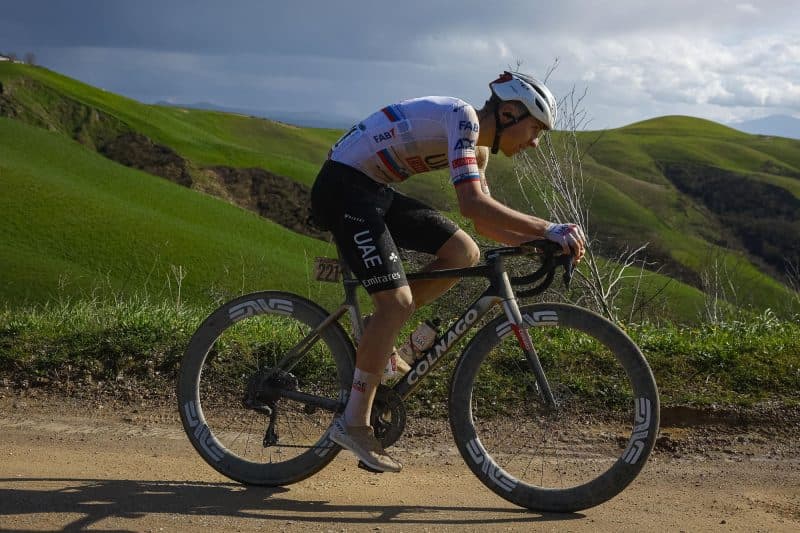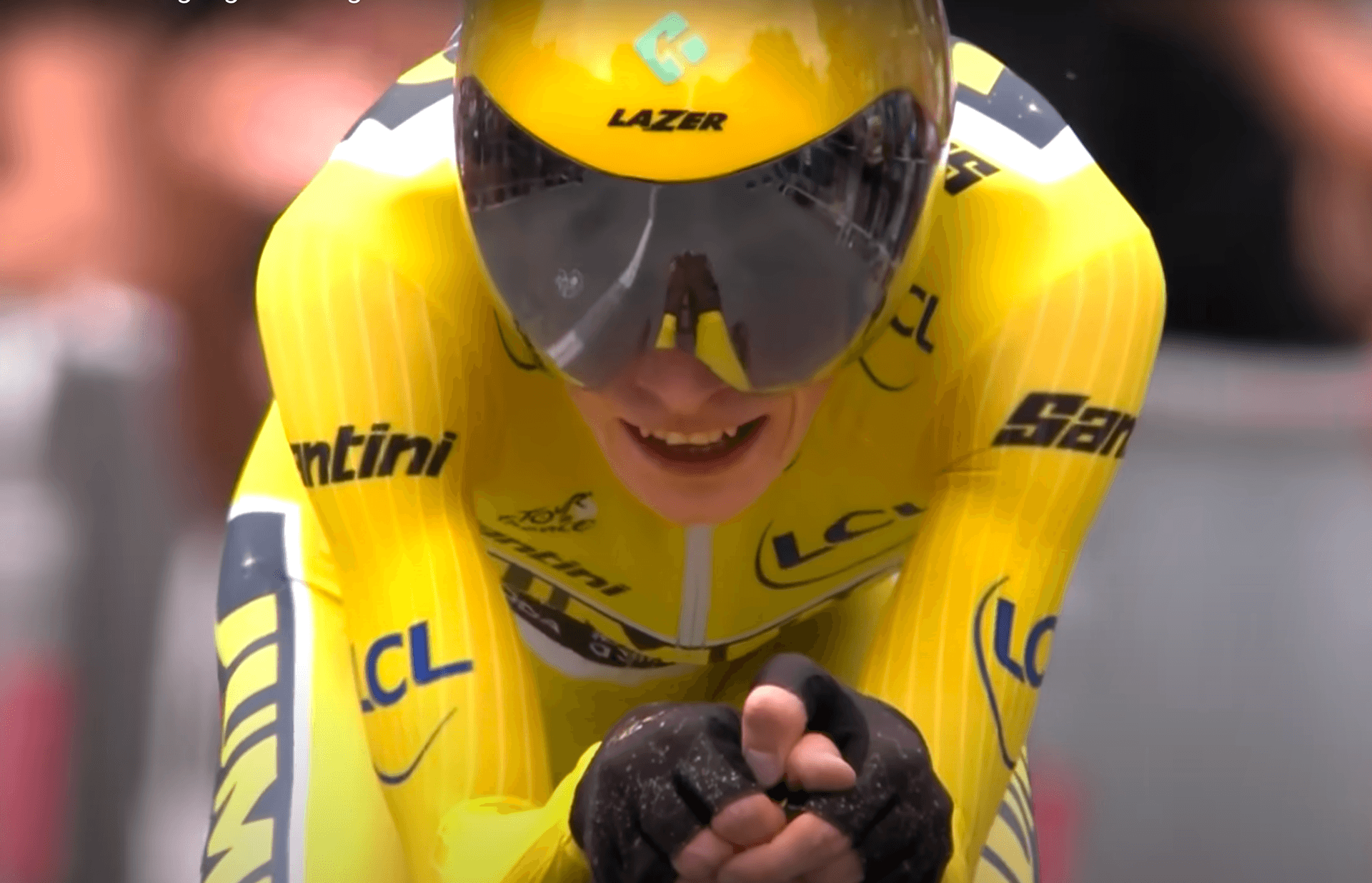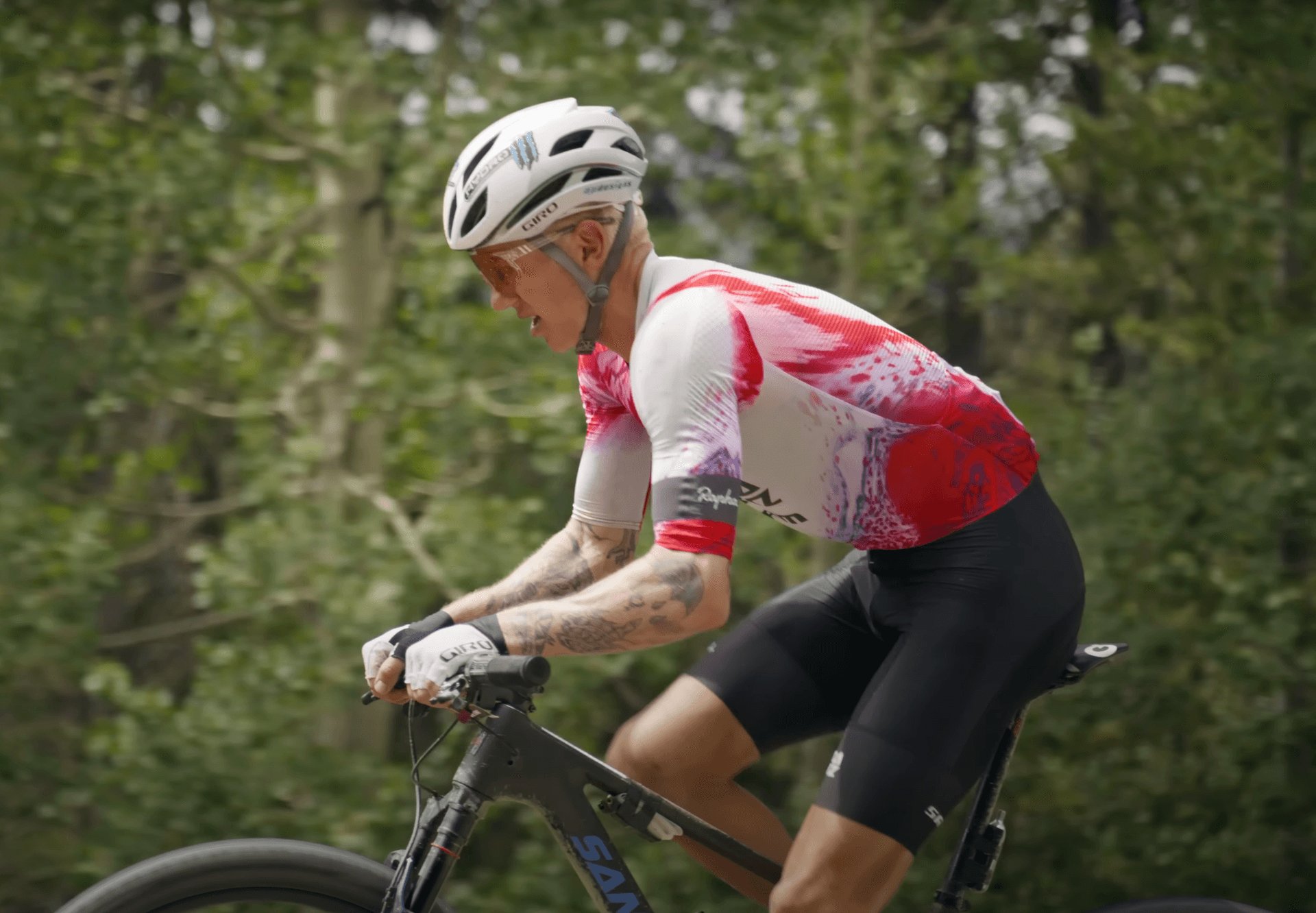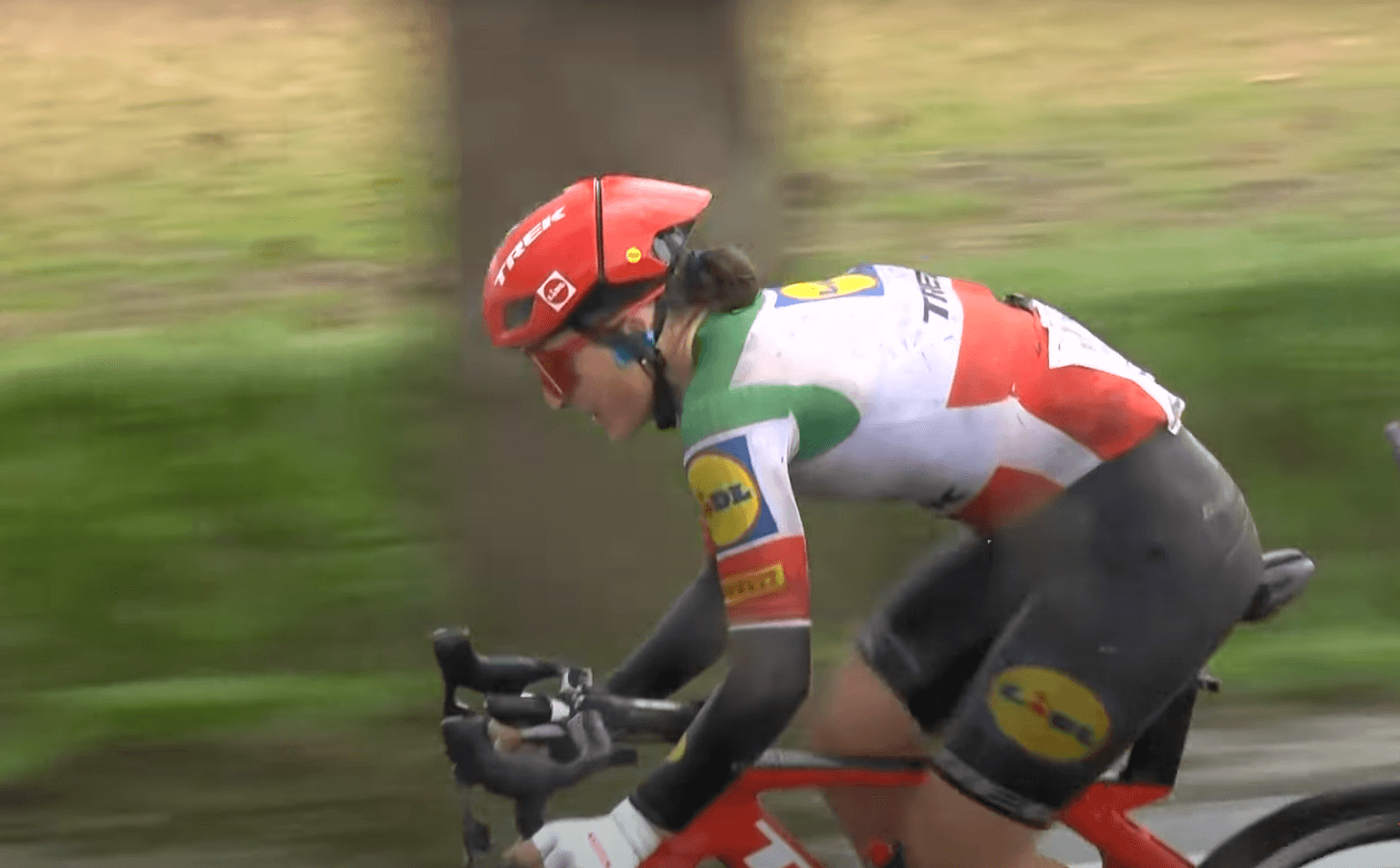On march 4 2024, Tadej Pogacar launched a violent attack on the white roads of Modena to separate himself from the rest of the field. Only this time what baffled everyone (myself included) is the fact that this winning attack came 81km from the finish line!
This meant that for the 148 minutes remaining Pogacar had to sustain a velocity that at least matched that of a group of 10 elite riders such as Irishman Ben Healy and last year’s winner Tom Piddock.
In this article, I will present what stood out from his position on the bike using images of the race and The Bike App's Bikefit Platform
Bike Setup
The Colnago V4Rs was his bike of choice for this race. The size he is riding is the 485 which is the third smallest size out of the 7 produced by the Italian company.
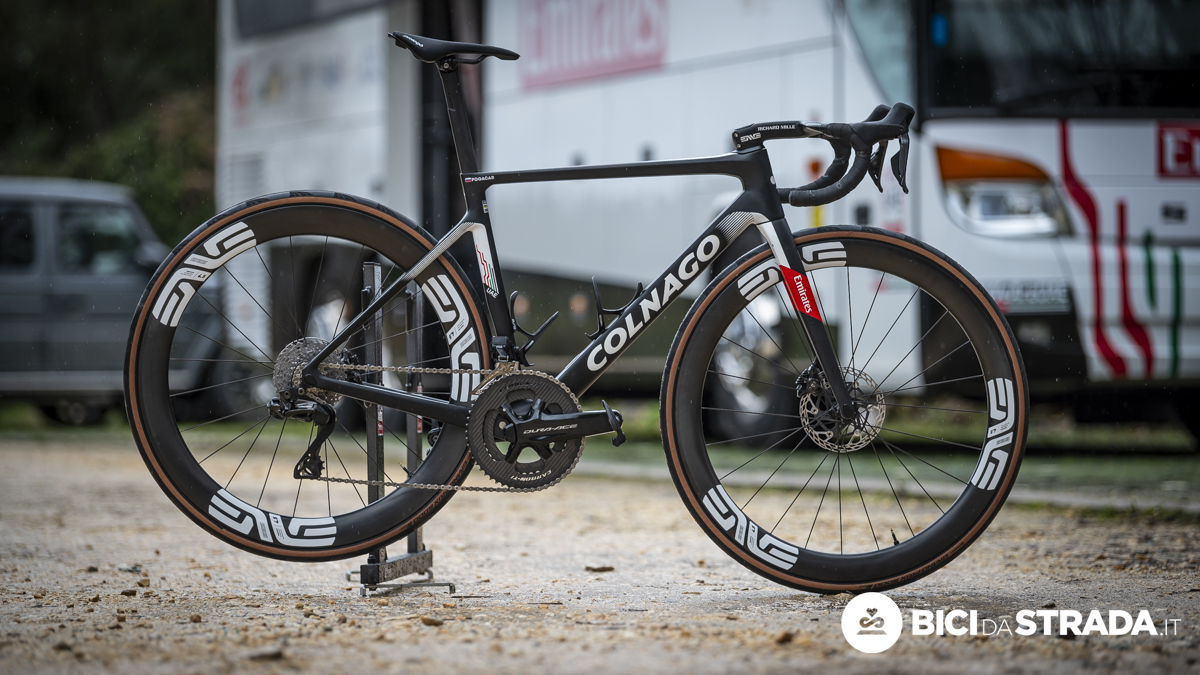
As far as we are concerned for our analysis of Pogacar’s position here are the notable elements of the Slovenian’s steed.
- Short crank arms at 165mm in length
- 0mm setback seat post
- Fairly neutral saddle fwd/aft (although this could have changed on race day)
- 130mm stem
If you want to know some more about Pogacar’s bike, here's the best article i've found on it.
In order to validate this info, I uploaded of the image of the bike on it’s own.
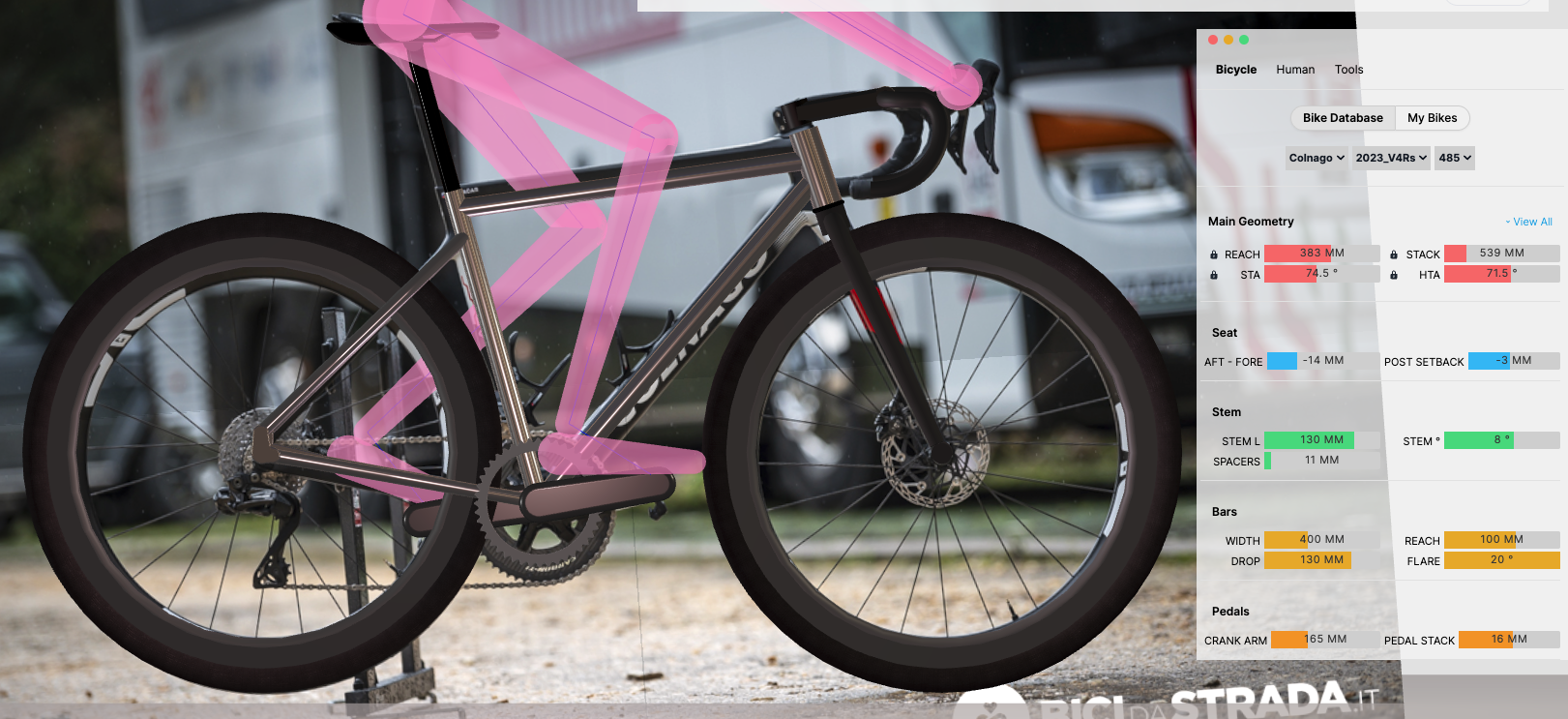
Geometry and components specifications were identical to Colnago's specifications se we know he was indeed riding a the V4Rs in size 485.
Position
There are 2 images that I was able to extract to the race footage and upload to the Bikefit Analyzer.
After correcting each one of them by height, width and rotation so that they best matched the dimensions of the bike and wheels, I entered Pogacar’s 176cm height as the height of the rider.
Image 1
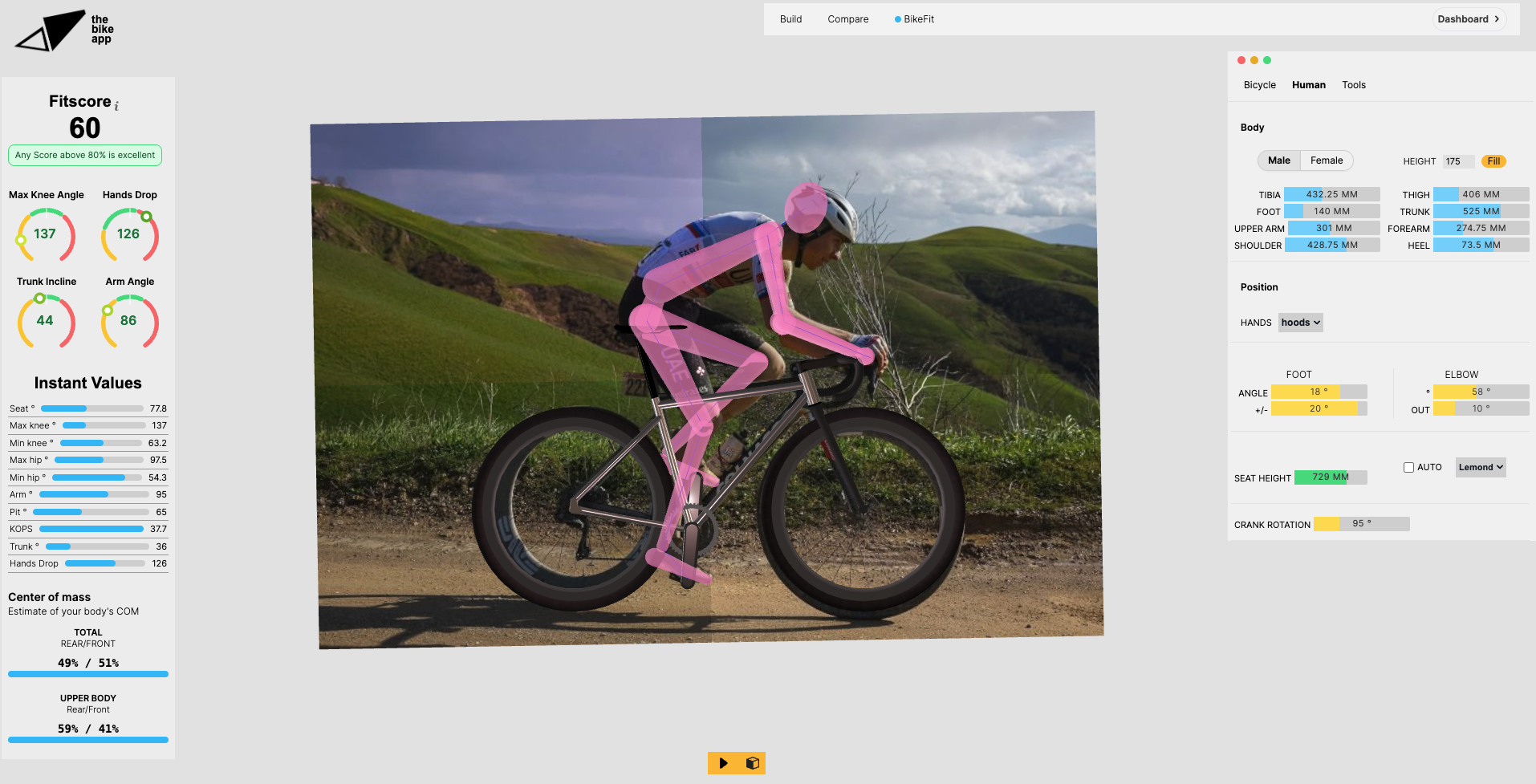
Image 2
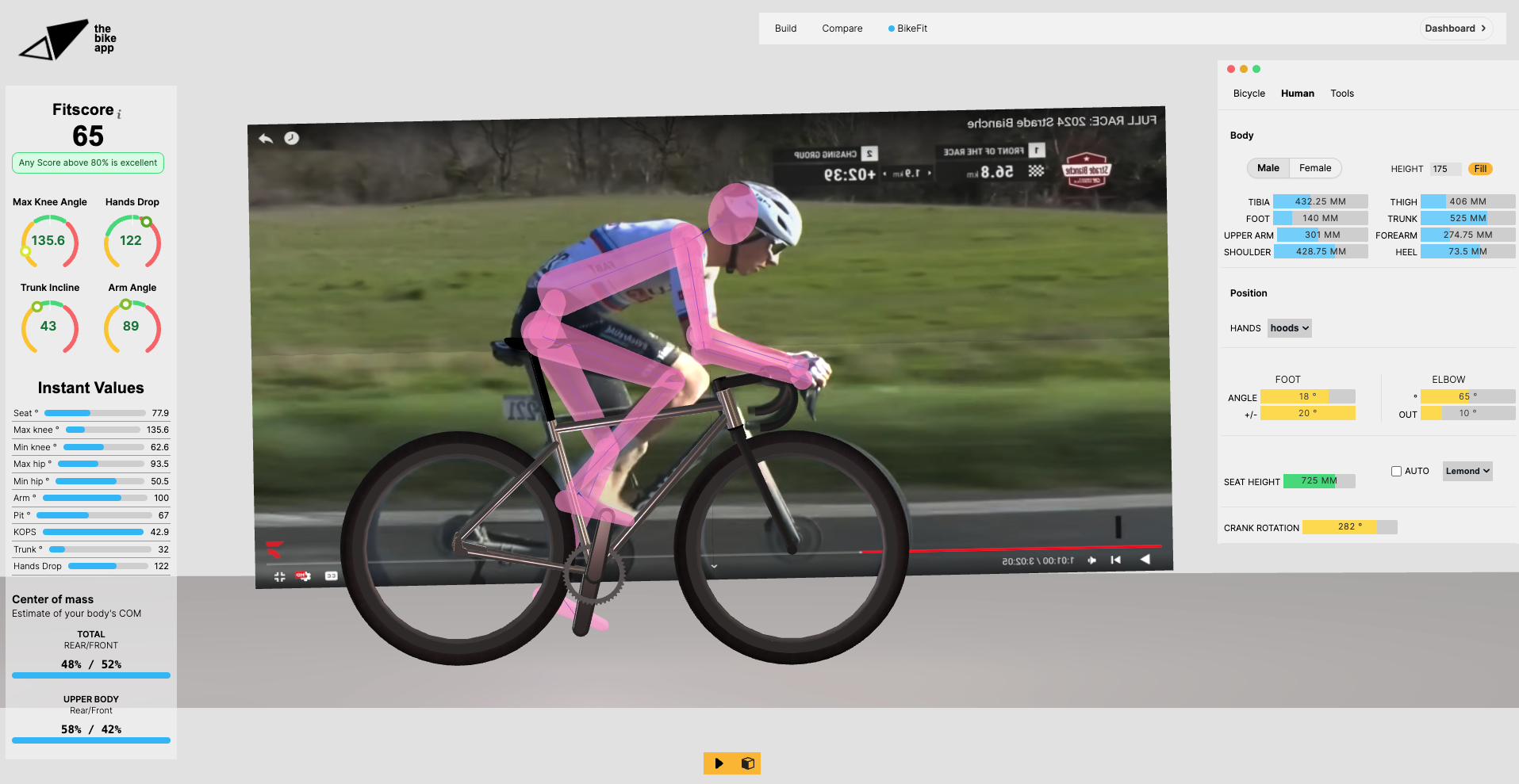
The only modifications I had to make to the default body proportions values was slightly increase the Slovenian’ thigh length by 12mm and reduce his torso height accordingly.
Results
Here are the main points that stood out to me.
Extremely low saddle
At an estimated saddle height of 727mm and a seat angle of almost 78°, Tadej’s maximal knee angle was only 136°.
To put that into perspective, Andy Pruitt’s recommended maximal knee angle sits between 145° and 155°.
This is also because the 2x Tour de France winner uses very short crank arms (165mm) which reduces the knee's range of motion.
If you are familiar with the Famous Lemond seat height formula (0.833 x inseam + pedal stack), Pogacar's seat height should be roughly 3.2cm higher!
One hypothesised benefit of doing that is minimizing the frontal area of the thigh. Thus possibly reducing the aerodynamic drag and making the riders legs more aero.
It'll be interesting to see if this particular choice was made specifically for this race.
Fairly Relaxed Upper Body
Torso
As far as profesionnal road racing is concerned, Pogacar's 43.5° of torso slope is not very aggressive. (especially not for riding in the wind for over 2 hours)
It's not uncommon to see pro riders at 30° when trying to minimize upper body's frontal surface aera. But... they are not riding with a Max Knee of 136°!
Sitting more upright on the bike is direcly linked to a more open hip angle, which can improve power output and respiratory capabilities.
As a mattter of fact, Pogi's minimal hip angle was a very comfortable 52.4°.
Elbows
Contrary to the popular thinking that elbows have to be “tucked in” to minimize aerodynamic drag, this did not seem to slow down pogacar who preferred a more comfortable ~6° of pronation.
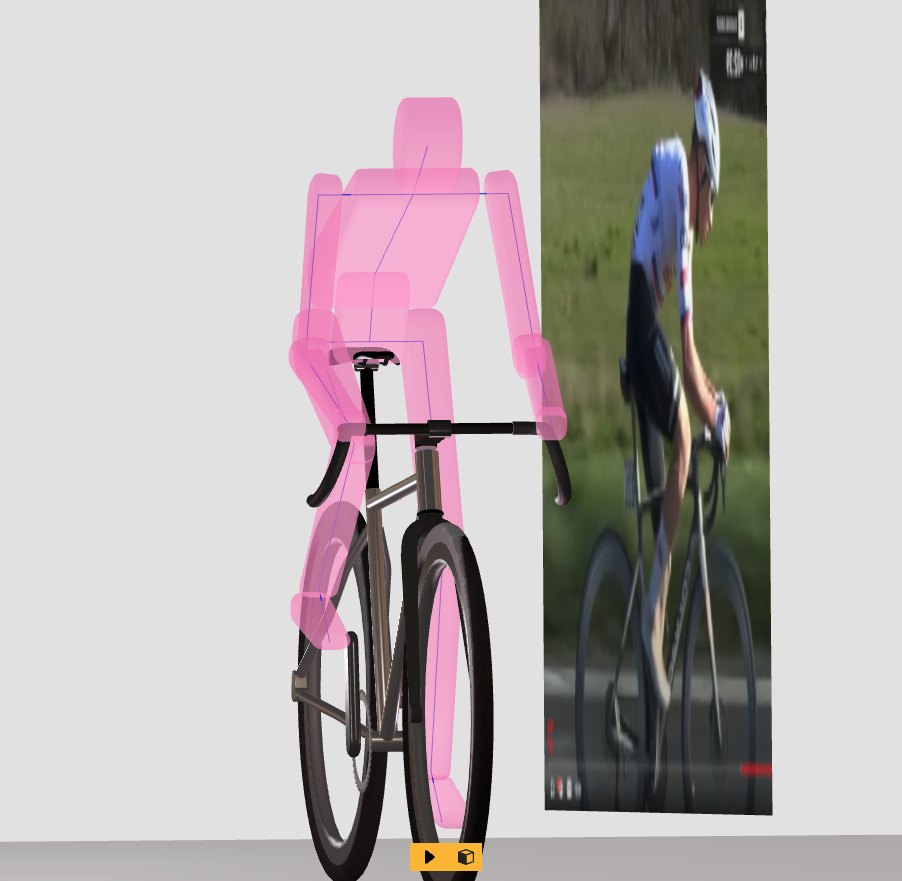
That's not to say his position was not an agressive one. In fact his handlebars were still 126mm under his saddle (despite it being low). Because the seat angle was so much forward, Pogacar managed to get quite low while still keeping the hip angle fairly opened.
Center of Mass Way Forward
By opting for a seat post with 0mm offset and sitting quite forward on the saddle, the effective seat angle of pogacar was arround 78°.
That is a 4° increase on the Colnago's already steep (for a road bike) 74.5° seat tube angle.
This has the effect of moving the centre of mass way forward. In fact his weight was just about equally distributed on each wheel.
According to Bike App's center of mass algorithm, only 51% of his weight on the rear wheel. This kind of weight distribution is more commonly found on timetrial bikes... not road bikes.
Of course, this depends on the individual, but the typical value recommended by bikefiters for weight distribution is 60% rear, 40% front to minimize pressure points.
A word of caution
It's always interesting to analyse what the wold's best riders are doing, but we need to keep in mind that their cycling position is the result of hundreds of thousands of kilometers of adaptation.
Therfore this article should not be interpreted as any kind of bikefitting advice.
Conclusion
Tadej Pogacar's position at Strade 2024 was a particullary unorthodox (therefore interresting) one to analyze. I know there was a lot of buzz arround it in the road racing community.
Hopefully it helps to clarify a little bit of the noise that's out there.
This was the very first blog post on this website. I will try to keep them coming.
Thanks for reading, Will
